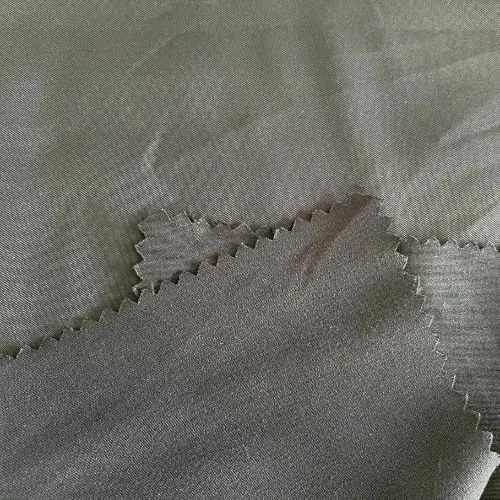Table Of Contents
What is Microfiber Twill Fabric?
Microfiber twill fabric is a modern, high-performance fabric known for its unique softness, strength, and durability combination. This fabric has become popular in many industries, made from ultra-fine synthetic fibers, usually polyester or a blend of polyester and nylon. The “microfiber” refers to fibers thinner than one denier, about 1/100th the diameter of a human hair, making it incredibly soft. Meanwhile, the “twill” part of the name refers to the diagonal weave pattern that provides a distinctive look and added durability.
|
Attribute |
Details |
|
Fabric Name |
Microfiber Twill Fabric |
|
Also Known As |
Micro Twill, Microfiber Twill Cloth |
|
Appearance |
Soft, smooth, with a slight diagonal weave pattern |
|
GSM Range |
150-300 GSM |
|
Composition Range |
100% Polyester, Polyester/Nylon blend |
|
Construction Range |
Twill weave |
|
Functionality |
Often enhanced with PU, TPU, or AC coatings for additional strength and water resistance |
|
Manufacturing Process |
Woven from ultra-fine synthetic microfiber strands using a twill weaving method |
|
Thread Density Range |
Typically 120-300 threads per inch |
|
Count Variations |
Commonly 75D, 100D, 120D depending on application |
|
Full Width |
57/58” or 59/60” |
|
Cuttable Width |
Usually 55/56” |
|
Fabric Breathability |
High breathability due to the open weave and thin microfiber strands |
|
Additional Coating Variations |
Can be coated with PU or TPU for added durability or water resistance |
|
Moisture-Wicking Abilities |
Excellent, absorbs up to 7 times its weight in water |
|
Heat Retention Abilities |
Moderate; does not retain much heat, making it suitable for warmer climates |
|
Stretchability |
Limited natural stretch, but can be blended with spandex for slight stretch |
|
Prone to Pilling/Bubbling |
Minimal pilling; very resilient against wear |
|
Country First Produced |
Japan |
|
Biggest Exporting Country Today |
China |
|
Recommended Washing Temperatures |
30°C - 40°C, machine washable with mild detergents |
|
Common Applications |
Sportswear, cleaning cloths, upholstery, automotive interiors, curtains, microfiber towels |
Key Characteristics of Microfiber Twill Fabric
-
Soft Yet Strong
Microfiber twill fabric is soft to the touch, almost like silk, but don’t let that fool you. It’s also incredibly durable and able to withstand heavy use without breaking down. The twill weave adds to its tensile strength by creating a sturdy structure, while the microfiber’s density resists tearing. -
Highly Absorbent
Microfiber twill fabric is highly absorbent, holding up to seven times its weight in water. This makes it an excellent choice for towels, cleaning cloths, and sportswear, where moisture absorption is critical. Plus, the fabric dries quickly, making it ideal for repeated use. -
Stain and Wrinkle Resistance
Thanks to its synthetic composition, microfiber twill fabric naturally resists stains and wrinkles. It doesn’t hold onto odors either, so it stays fresh for longer. This feature, combined with easy maintenance, makes it a go-to choice for everyday use. -
Breathable and Lightweight
Despite its absorbency and durability, microfiber twill fabric is lightweight and breathable. It doesn’t trap heat, which is perfect for active wear or upholstery in warmer climates.
Applications of Microfiber Twill Fabric
Microfiber twill fabric is widely used across various industries due to its unique properties:
- Apparel: Microfiber twill is frequently used in sportswear and activewear for its absorbency, breathability, and quick-drying features.
- Cleaning Supplies: Due to its excellent absorbency and softness, it’s a top choice for cleaning cloths and towels, especially for delicate surfaces like glass and car finishes.
- Upholstery and Home Textiles: The durability and stain resistance of microfiber twill make it ideal for sofas, chairs, and curtains.
- Automotive Interiors: You’ll find microfiber twill in car interiors, especially in seat covers and headliners, where it provides comfort, durability, and an upscale look.
Conclusion
In a nutshell, microfiber twill fabric offers a remarkable blend of softness, durability, and versatility. Whether it’s used for clothing, cleaning, or upholstery, this fabric stands out for its performance and ease of care. Its combination of absorbency, resilience, and lightweight comfort makes it a smart choice for a variety of uses.




























Comments - 00
Leave A Reply
Thanks for choosing to leave a comment.